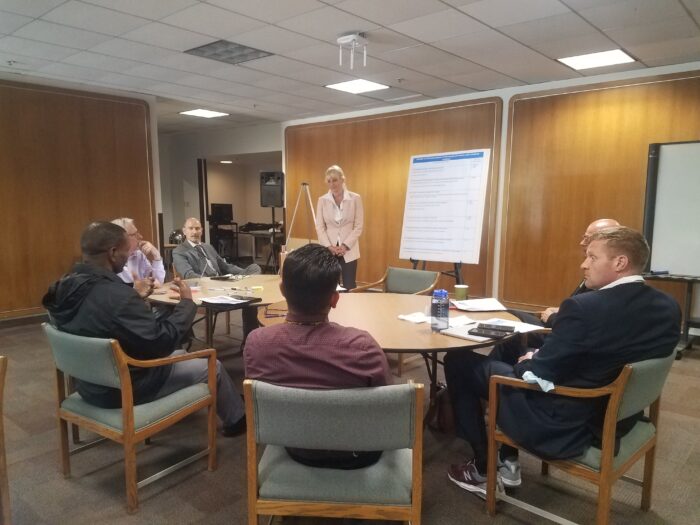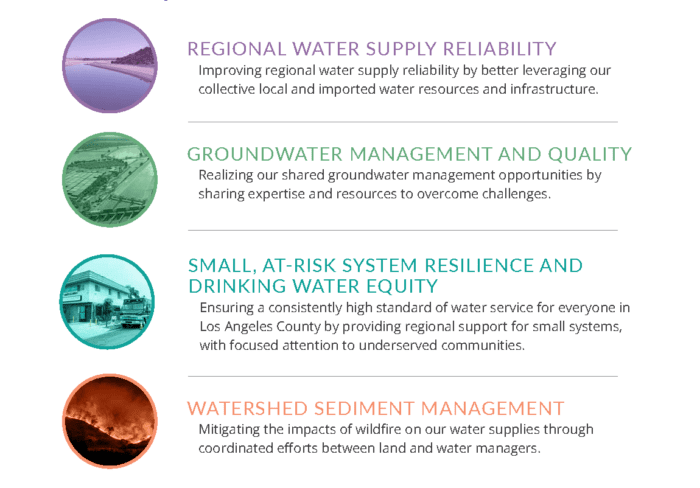Facilitating the Planning Process
Once Woodard & Curran completed the planning framework, we supported LACPW through a two-year planning process, which included more than 100 meetings, workshops, and listening sessions. These various events were intended to bring community together and facilitate relationship building and partnerships in the CWP development process. As much of this work occurred during the global pandemic, many sessions were held virtually due to California’s COVID-19 related restrictions and divided into the following categories:
- Technical Working Groups: small, highly facilitated discussions with specialized technical experts representing 5 to 10 water management agencies per group designed to produce recommendations for regional target strategies and actions within the CWP framework.
- Stakeholder Meetings: open-invitation meetings designed to complement already scheduled Integrated Regional Water Management (IRWM) program meetings where stakeholders were asked to vet and enhance work group recommendations relative to their subregional desired outcomes and opportunities.
- Special Group Meetings and Listening Sessions: individualized meetings with tribes, rural community representatives, and existing environment and environmental justice groups to incorporate their interests into the final plan.

Persephene St. Charles, Water Resources National Practice Leader, facilitates a meeting in Los Angeles County.
To aid in the facilitation of these meetings, Woodard & Curran developed a customizable, interactive planning portal to foster interactions with stakeholders, provide enhanced water resource education, facilitate document review, and encourage greater participation.
This robust public engagement process allowed Woodard & Curran’s team to identify four focus areas with 16 key targets with a calculated baseline and measurable metrics based on known data sources or planned data collection as part of CWP implementation process. Our information and data management team coded a data framework to collect, aggregate, and analyze data within the planning portal. This innovative programming created an automated and customizable template to show annual progress on all 16 targets.
The CWP planning process also identified 14 strategies, for which several actionable items were identified. To implement this aspect of the CWP, Woodard & Curran partnered with stakeholders to create a two-year action plan with realistic and specific near-term steps that could be taken through the CWP collective.
Our staff is continuing to work with LACPW staff during the draft CWP public review period to develop an implementation program framework that identifies potential partnerships with program funding entities, opportunities to increase stakeholder participation, and means to ensure successful implementation and progress reporting on established CWP targets.


